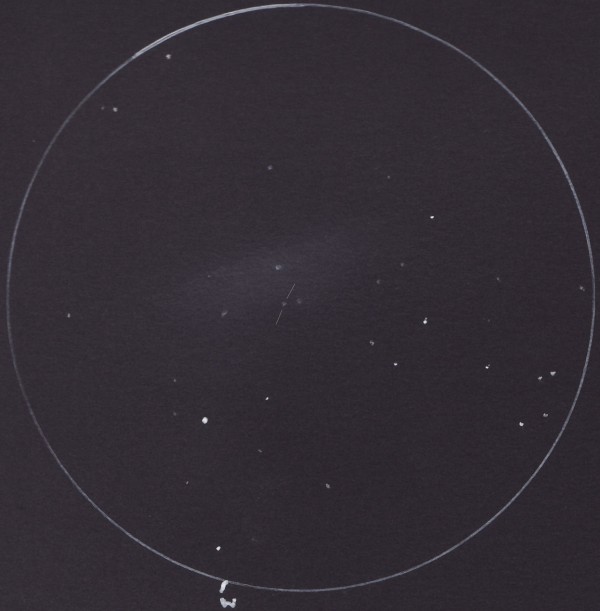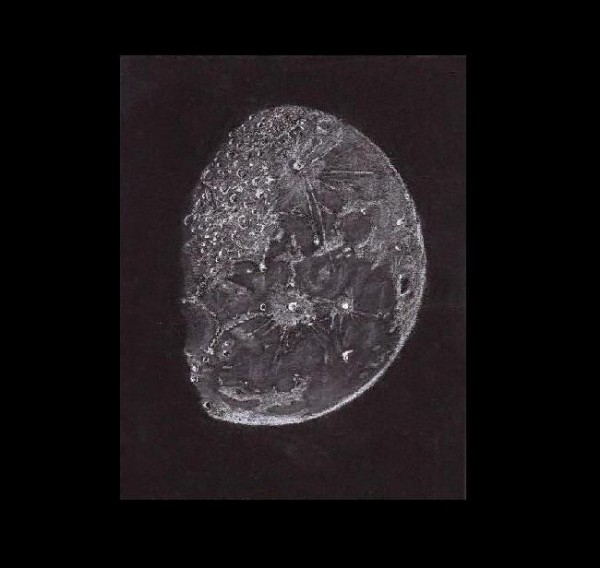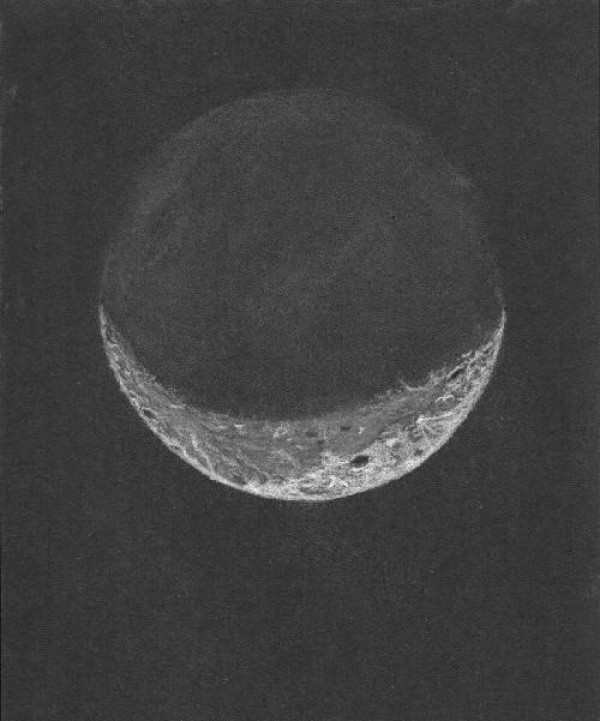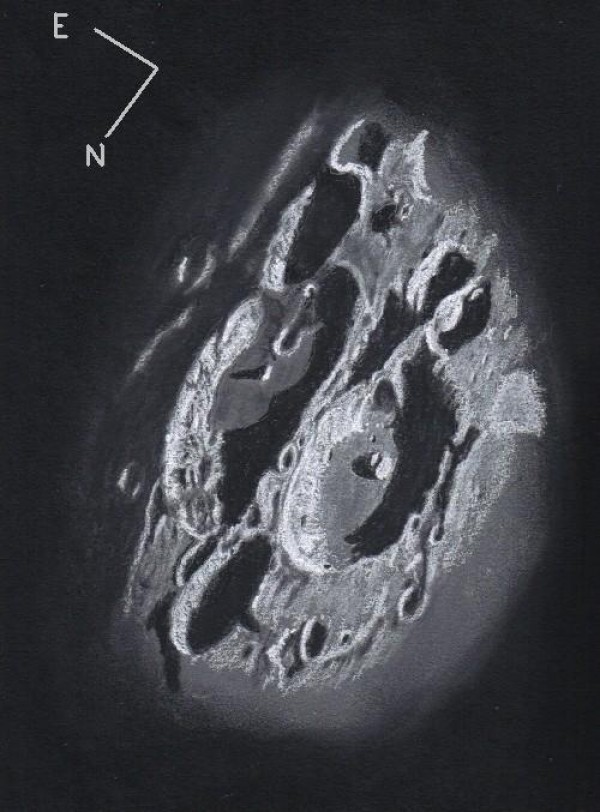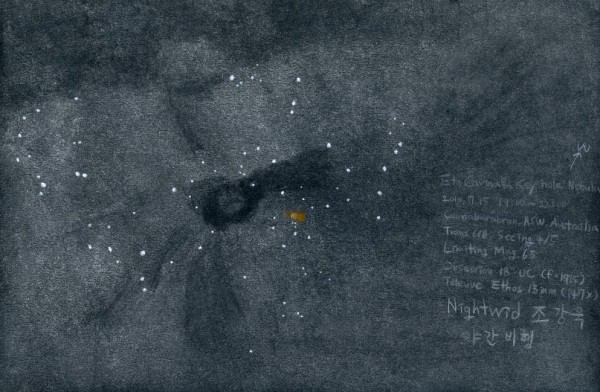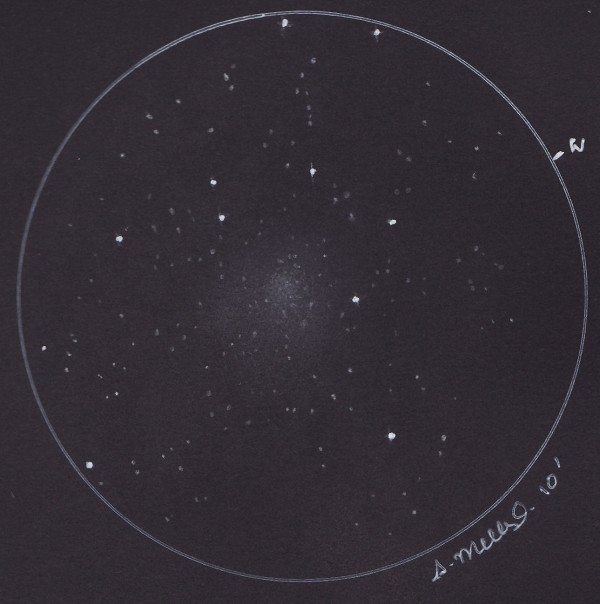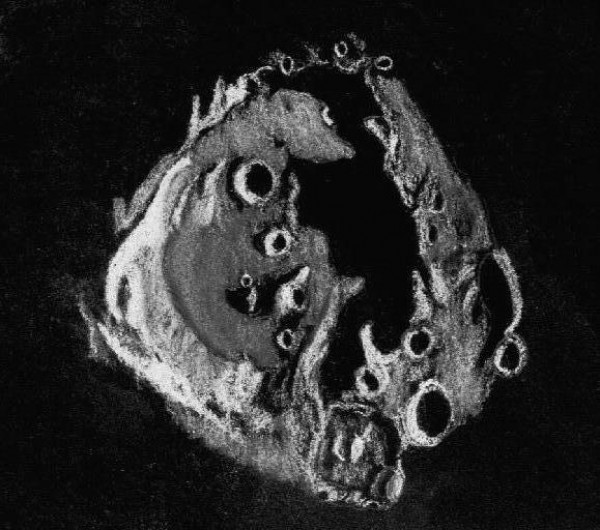MCG-3-1-15
“Wolf-Lunmark-Melotte System”
Dwarf irregular galaxy
Cetus
09/08/10
Ilford NSW Australia
56cm f5 Dobsonian telescope
Field: 32′
Magnification:: 129x
Sky Quality Meter reading: 21:58
Black Canford paper
White pen
White pencil
White oil pencil
White pastel chalk
Paint brush
Blending stump
This diffuse dwarf galaxy required a relatively wide field with modest magnification to show it at its best.
The WLM system is a distant local group member around 4 million light years away and was discovered by Max Wolf in 1909.
However it was not until 1926 that its nature as a galaxy was determined by Knut Lundmark and P.J. Melotte.
This galaxy also has an extra-galactic globular which is a challenge for keen deep sky observers.
After checking some finder charts against the sketch I have marked what I suspect is the globular.
Scott Mellish
